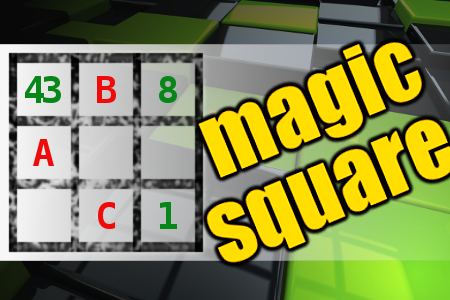MAGIC SQUARE: Calculate A*B-C
The aim is to place the some numbers from the list (1, 2, 4, 5, 6, 8, 42, 43, 44, 46, 67) into the empty squares and squares marked with A, B an C. Sum of each row and column should be equal. All the numbers of the magic square must be different. Find values for A, B, and C. Solution is A*B-C.Correct answers: 3
#brainteasers #math #magicsquare

An 87 year-old man went to the...
An 87 year-old man went to the doctor to get a physical.
A few days later, the doctor saw the man walking down the street with a gorgeous young lady on his arm.
A couple of days later, when the old man had an appointment with the doctor again, the doctor said, "You're really doing great, aren't you?"
The man replied, "Just doing what you said doctor, "Get a hot mama and be cheerful."
The doctor said, "I didn't say that!... I said you have got a heart murmur. Be careful!"
A few days later, the doctor saw the man walking down the street with a gorgeous young lady on his arm.
A couple of days later, when the old man had an appointment with the doctor again, the doctor said, "You're really doing great, aren't you?"
The man replied, "Just doing what you said doctor, "Get a hot mama and be cheerful."
The doctor said, "I didn't say that!... I said you have got a heart murmur. Be careful!"

